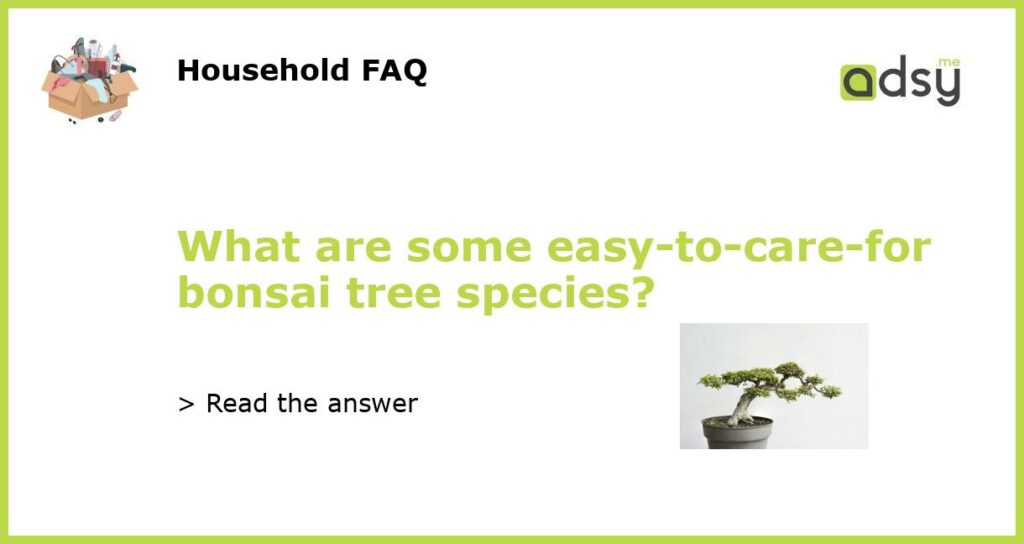5 Easy-to-Care-For Bonsai Tree Species
Bonsai trees are a beautiful addition to any home or office, but many people are intimidated by the care they require. Luckily, there are several easy-to-care-for bonsai tree species that are perfect for beginners. In this article, we’ll explore five of the best options.
Juniper
Juniper is one of the most popular bonsai tree species, in part because it is extremely easy to care for. It requires very little water, and can even survive being forgotten about for a few days. Juniper bonsai trees thrive in sunny, open spaces, and should be pruned regularly to maintain their shape. They can also be wired to add extra interest.
Ficus
Ficus bonsai trees are another great option for beginners. They are relatively resistant to pests, and can tolerate imperfect growing conditions. Ficus bonsai trees do best in bright, indirect light, but can also thrive in low light environments. They should be watered regularly, but not over-watered.
Chinese Elm
Chinese Elm is another popular choice for bonsai tree enthusiasts. It is a hardy species that can grow in a variety of growing conditions. Chinese Elm bonsai trees require moderate watering and ample sunlight, but can tolerate some shade. They should be pruned regularly to encourage leaf growth and maintain their shape.
Hawaiian Umbrella
Hawaiian Umbrella bonsai trees are a unique and beautiful option for beginners. They are extremely resilient and can grow in a variety of lighting conditions, from full sun to low light. Hawaiian Umbrella bonsai trees require moderate watering, but should be allowed to dry out somewhat between waterings. They can be pruned to maintain their shape, but only need to be wired as a last resort.
Jade
Jade bonsai trees are perhaps the easiest species to care for. They require very little water, and can tolerate a range of temperatures and light conditions. Jade bonsai trees should be pruned regularly to encourage new growth, but can sometimes become too large for their pot if left unchecked. They also tend to prefer being slightly pot-bound, so repotting should be done only when absolutely necessary.






